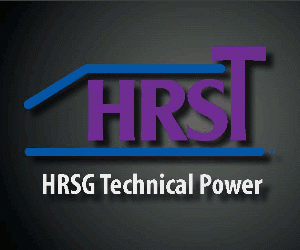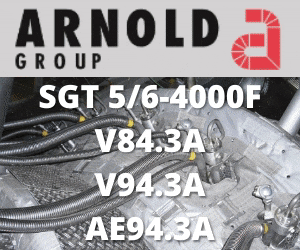An international user writes via the forum, We have a horizontal dual-pressure HRSG (Alstom India) with bypass stack and diverter damper. A recent inspection of the HP section found that some tubes and face plates were “sagging” (photos). Those tubes are misaligned because of this. The same observation was made during the previous inspection, with no further deviation observed.
Kindly review the pictures and advise if there is any standard or comparison document to benchmark the acceptable level of sagging/deflection in HRSG superheater tubes. Thanks for the help in advance, HB.
HB: The bowing (you called it sagging) of tubes such as this is caused by water passing through and quenching (shrinking) these tubes while other tubes remain dry and hot. The water typically arrives from the attemperator, but can also come from undrained pipework or headers (manifolds in the case of the Alstom HRSG). There is no standard that I am aware of regarding the acceptable degree of bowing.
When bowing is severe, it creates large gaps between tubes, allowing bypass of exhaust gas, or permits adjacent tubes to contact each other. In such cases, the bowing generally is considered in need of correction. However, the degree of bowing in your photo does not look severe.
It is also typical not to be concerned about future problems being caused by bowing if it is moderate and not getting worse over time (as in your case). However, consider that the water causing the bowing may accelerate thermal fatigue damage in welds between interconnection piping and headers/manifolds. This can be a particular problem in the Alstom design.
The more important issue is where did the water come from and during what operating condition. A common source of the water is leaking attemperator spray when the tubes are hot with little or no steam flow (such as during startup and following shutdown).
Another source/event is overspray of the attemperator during startup, shutdown, and/or during low-load operation. If the steam temperature downstream of the attemperator drops below 50 deg F above saturation, overspray is occurring. The closer the steam temperature downstream of the attemperator is to the saturation temperature, the more damage that occurs in the tubes, headers, manifolds, and interconnecting piping.
Another source of water is the owner failing to ensure that superheater and reheater pipework, manifolds, and headers are completely drained of condensate and leaking spray water prior to initiation of steam flow during each startup.
Repeated water-quenching events may not result in increasing degrees of tube bowing if later thermal transients are not more severe than the initial transient that first caused the tube to bow. However, each repeated thermal transient does cause additional thermal fatigue damage in pipework to manifold/header welds and will eventually result in cracks. Thus, it is very important to identify why and when the thermal transients occur and apply corrective actions promptly.
I routinely identify thermal transients and their causes, then suggest the necessary corrective actions for owners of HRSGs around the world. To dig deeper, find several papers and articles on the subject on my website at www.CompetitivePowerResources.US.





